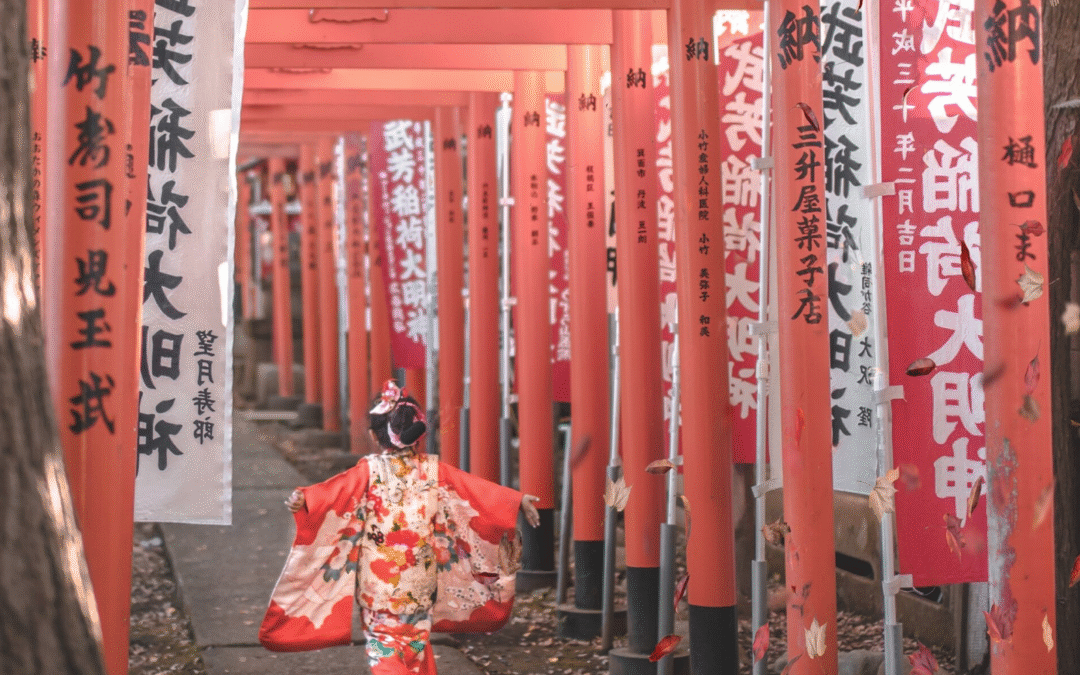Japan is famous for its beautiful seasonal traditions, but few are as heartwarming — or as adorable — as Shichi-Go-San (七五三), the Festival of 7-5-3. Every November, families across Japan celebrate the healthy growth of their children with elegant kimono, sweet candy sticks, and trips to the local shrine. It’s one of those unique cultural moments that perfectly blends family, tradition, and community — all wrapped in smiles (and often, a few tears from kids who don’t love wearing itchy kimono!).
If you’ve ever been in Japan around mid-November, you might have noticed families dressed in colorful outfits visiting shrines — that’s Shichi-Go-San! But what exactly is this festival about, and why does it matter so much to Japanese families? Let’s take a closer look.
🌸 What Is Shichi-Go-San?
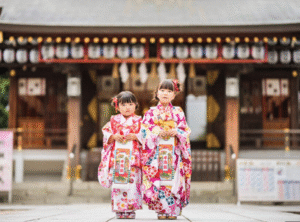
The name Shichi-Go-San literally means “Seven-Five-Three.”
It’s a celebration for children aged seven, five, and three years old, marking milestones in their growth and thanking the gods for their health and happiness.
Traditionally:
-
Three-year-old girls and boys celebrate growing out their hair for the first time (in the past, babies’ heads were often shaved for health reasons).
-
Five-year-old boys wear hakama (traditional pleated trousers) for the first time.
-
Seven-year-old girls begin wearing the obi, the wide sash that ties a kimono, symbolizing their step toward independence.
The date for Shichi-Go-San is November 15th, but families often celebrate on the weekend before or after for convenience. Many people visit Shinto shrines to pray for their children’s continued health and happiness — and to take plenty of commemorative photos!
🎎 The Tradition’s Origins
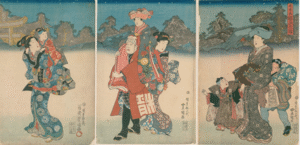
Shichi-Go-San dates back over 1,000 years, all the way to the Heian Period (794–1185). Back then, childhood illnesses were common, and reaching certain ages was considered a blessing. Families would hold ceremonies to mark these ages and to thank the gods for protecting their children.
Over time, these ceremonies evolved into the more casual, photo-filled celebration we see today. What hasn’t changed is the spirit of gratitude. Shichi-Go-San is still about thankfulness for growth, health, and family bonds — values that remain deeply rooted in Japanese culture.
🍬 Chitose Ame: The Long Candy of Long Life
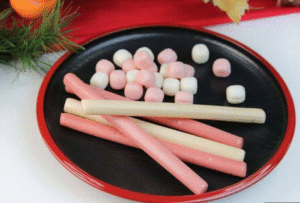
No Shichi-Go-San celebration is complete without Chitose Ame (千歳飴), or “Thousand-Year Candy.”
These long, thin red and white candy sticks come in beautifully decorated bags covered with cranes and turtles — both symbols of longevity in Japan.
Children receive Chitose Ame as a sweet wish for a long, healthy, and happy life. Parents often encourage their kids to hold up the candy for pictures, but finishing the whole stick is a serious challenge — it’s really long!
If you ever spot this candy in stores during November, now you’ll know exactly what it represents. And if you’re lucky enough to try one, you’ll notice it has a mild, nostalgic sweetness that feels like stepping back into childhood Japan.
👘 Dressing the Part
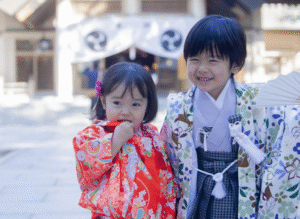
One of the most delightful parts of Shichi-Go-San is the clothing!
Little girls wear gorgeous, brightly colored kimono, often with floral designs and matching accessories in their hair.
Boys look dashing in hakama and sometimes carry a small sword as part of their traditional outfit.
For many families, this may be the first time their children have ever worn such formal clothing, and the process of dressing up can take quite a bit of patience — especially when the kids just want to run around and play!
But the photos that come out of this day are absolutely priceless.
These pictures often end up on family walls or in albums, cherished for decades as a memory of a special childhood milestone. In some cases, parents even visit professional photo studios that specialize in Shichi-Go-San portraits — complete with makeup, lighting, and backdrops.
🏯 A Day at the Shrine
Once dressed, families head to their local Shinto shrine for the blessing ceremony. The priest waves a purification wand (haraigushi) over the children, offers prayers to the gods, and gives small lucky charms (omamori) to take home.
After the shrine visit, it’s common to go out for a nice family meal. Many people choose traditional Japanese restaurants for the occasion, while others enjoy sushi, tempura, or even a modern buffet — depending on the child’s taste (and patience!).
The day is really about spending time together as a family — sharing smiles, snapping photos, and making memories that will last long after the candy is gone.
🌾 November in Japan — A Season of Thankfulness
The timing of Shichi-Go-San is no coincidence.
November is a month filled with gratitude and reflection in Japan — the rice harvest is complete, the weather turns crisp, and the leaves are in full autumn color. Families feel thankful for the blessings of nature and for their loved ones’ health.
At Freedom Japanese Market, we love this connection between food, family, and appreciation. It’s the same spirit we try to bring to every snack box we send. Each snack we select tells a little story about Japanese culture — from traditional rice crackers to modern chocolate treats. Every package is a celebration of Japan’s seasons, flavors, and everyday joys.
🎂 A Fun Fact — November 15th Is Also Ken’s Birthday!

Here’s a little behind-the-scenes secret: November 15th — the same day as Shichi-Go-San — is also the birthday of Ken, the founder of Freedom Japanese Market!
So while families across Japan are celebrating their children growing up, we’re also celebrating the person who helped build this family-run business from the ground up.
Ken often jokes that he’s “still growing up too” — though maybe not in height!
Just like the kids of Shichi-Go-San, Freedom Japanese Market continues to grow each year thanks to the support of families and snack lovers around the world. So, in a way, we’re all celebrating together on November 15th!
🌏 Bringing Japan’s Traditions (and Snacks!) to You
Whether you’re familiar with Japanese culture or just starting to explore it, Shichi-Go-San offers a beautiful glimpse into Japan’s heart — its deep appreciation for family, gratitude, and tradition.
If you’d like to experience a little bit of Japan from wherever you are, our Freedom Japanese Market snack boxes are a perfect place to start.
Each month, we send a carefully curated selection of snacks — both traditional and modern — directly from our family in rural Japan to homes all over the world. Every box includes a full-color guide, allergen information, and international tracking, so you can enjoy your snack adventure with confidence.
Just like the families celebrating Shichi-Go-San, we believe in being thankful for every step of growth — and every new connection.
So, as Japan celebrates the healthy growth of its children this November, we invite you to celebrate with us — by discovering new flavors, learning about new traditions, and maybe even finding your own favorite Japanese snack!
👉 Start your Japanese snack adventure today at www.freedomjapanesemarket.com
From our family to yours — Happy Shichi-Go-San!

